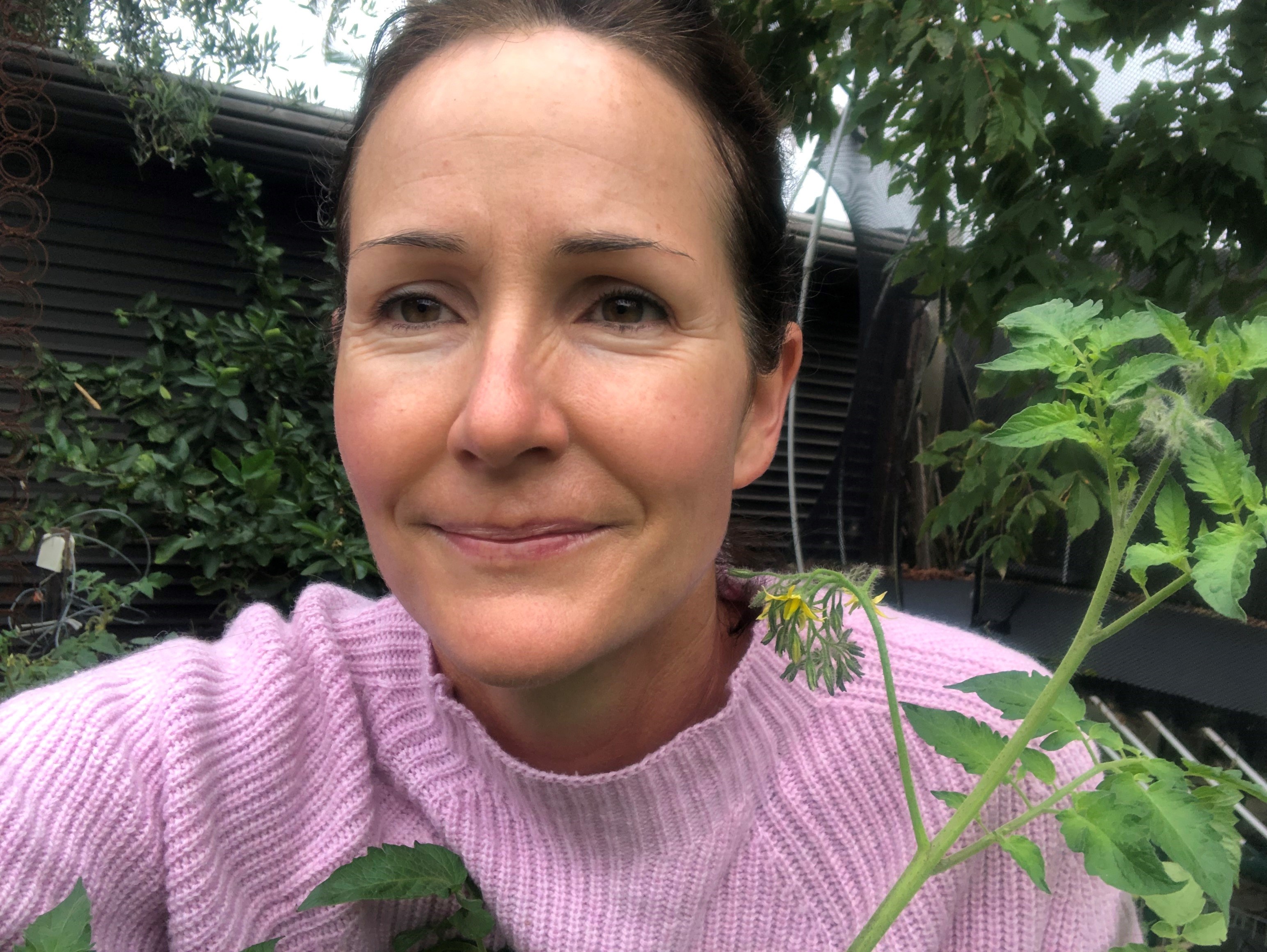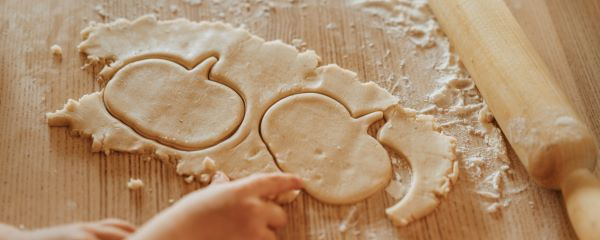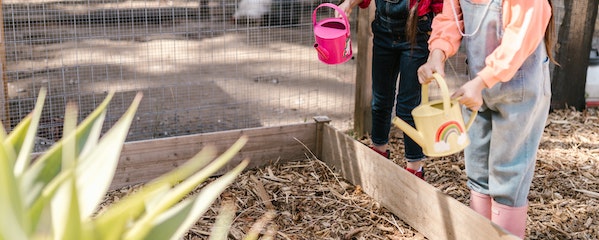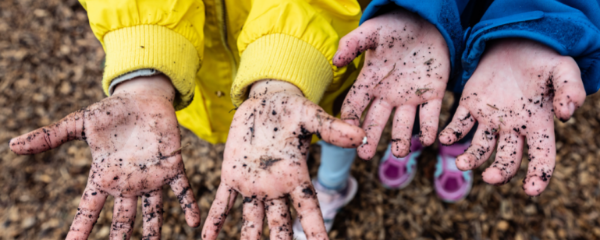Wellbeing in practice

Kate Beckwith is an occupational therapist, former garden specialist at Elwood Primary School for five years, and is now the Kitchen Garden Foundation’s Professional Development Coordinator. Here she reflects on the benefits of the Program for student wellbeing.
Educators and students should have permission to see their program not just as a series of outcomes that need to be met, but a space for wellbeing to prosper.
– Kate Beckwith, Professional Development Coordinator, SAKGF
Young people are experiencing social disconnect, as well as a disconnect from routines, their emotions, and proprioceptive feelings – that’s the feedback from hands on actions such as stretching, dragging, chopping, or kneading. From a therapeutic point of view, movement is important. Stretching and compressing your joints sends messages to your brain. It actively works to keep you calm while regulating muscle tone and improving your posture – all factors that enable meaningful engagement in activity. This has been compromised with students spending so much time learning at computers and on devices.
The Kitchen Garden Program provides opportunities to connect with palpable proprioception again. Children can feel the resistance of the dough as they knead with their hands, and the hardness of compacted soil after warm months when they have to dig a bit harder with their pitchfork. They don’t get that physical feedback sitting at a desk.

They have also had to grapple with a lack of control over the past 20 months. There’s a prevailing sense of things having been taken away but getting back into the kitchen and garden can address this. Children can think and do: “I’ve got a seed, I can help it to grow, I can make this flour into pasta.”
The program offers an opportunity to take agency, fostering an ‘I can’ attitude and mentality. During the past two years of lockdowns and uncertainty, we’ve had to accept so much. While students may not be able to articulate that, in the kitchen and garden they can address it by taking back the reins.
Many schools will be walking back into neglected gardens after lockdowns and summer, giving students the chance to learn that good things can come from hard work, and “I can be part of the solution”.
An amazing colleague always reminded me that we are not privy to what has happened in our students’ lives that morning. They may have had a tearful goodbye, or a bad experience in the playground. But when they enter the kitchen or garden, they can step back, take a moment to feel the wind in their hair or the sun on their backs, and be present in the here and now. This skill, to reset after unwelcome experiences, is something they can take with them for the rest of their lives.
It’s about learning to reduce the level of overwhelm and subtly producing a calm attitude to our sometimes frenzied spaces.
– Kerrilee Kimber, Mindfulness and wellbeing practitioner.

Creating a mindful environment
To the untrained eye, a kitchen garden class can look like chaos and frenzy, as children with tools and implements divide off into groups in all directions. As the specialist we’re comfortable, as we know how it ends. But for new volunteers especially, it can be a great comfort to know how to tackle things at the pointy end of a session in advance.
Identifying points to pause and reset is another useful strategy. Whether at the beginning or the middle of a session, perhaps as they shift from preparing dishes to cleaning up, this can take the form of simply stopping the class and saying, “hang on, let’s regroup, let’s reset, before we start again.” Educators can set up these points at the outset and assess the right moments to use those wellbeing tools.
The practice of gratitude is also easily worked into kitchen garden classes simply by taking a moment to ask students, “what are you grateful for today?” It might be the chickens laying eggs, or being able to work alongside their friends.
In the garden we have many ways of being able to take a mindful moment and reflect: it’s hot, it’s windy, this is what I feel.
Ideas for activities:
- Start out with a mindful moment – classes can start by noting the weather – how it affects our bodies, our thoughts, and our feelings, and how we can manage this. For example, "when it’s hot, I feel like my strength is melting – I try to walk in the shade and I work slower to stay cool." Or, "when it’s windy, my thoughts and words feel like they blow away – I need to try harder to keep focused on my task."
- Adopting a plant – on a walk through the garden, ask children to adopt a plant and check on it throughout the seasons, learning how to nurture that plant over the course of the year. This is driven by the child and where their consciousness is. There are no right or wrong answers.
- Texture rubbings – children seek out a texture in the garden and work how they can transfer it to a different medium and how it can be used – perhaps as a background for a volunteer advert, or for their journal to track changes through the seasons.
- Windows on the world – children make a square from twigs and find a spot outdoors to place the square, then over the next 20 minutes observe what moves through their square. Perhaps ants or a ladybug, or something chasing a ladybug. This activates their curiosity – they might have an absolute revelation about a spot which just looked like dirt.
- Insect tour – find an insect and follow it. This simple activity is about allowing something to take you in an unexpected direction. Responding to it with your mind and your body and your feelings.
Activities that connect children and young people with their senses are great for wellbeing. Often, these are self-directed, or performed in small groups. Which is great for student agency, but also a boon for educators who might be short on volunteers.
One of my favourite activities is called ‘smell-a-thon’, where a selection of herbs are laid out and kids take turns to crush one, then smell it and see if they can identify it. They’re asked what they think it would taste well with. This activates the senses and sparks their curiosity. It also encourages sharing and creative thinking: “I love to put mint in tea. What would you do with it on a hot day?”
Often food is used for a direct purpose in the program, but activities which use food for a sensory purpose instead can be very satisfying for children and young people.
Members can see examples of alignments to Australian curriculum learning outcomes in our Shared Table resource, Kitchen Garden Learning Tasks for Primary Schools, pages 13-19.
< Back to Latest News

